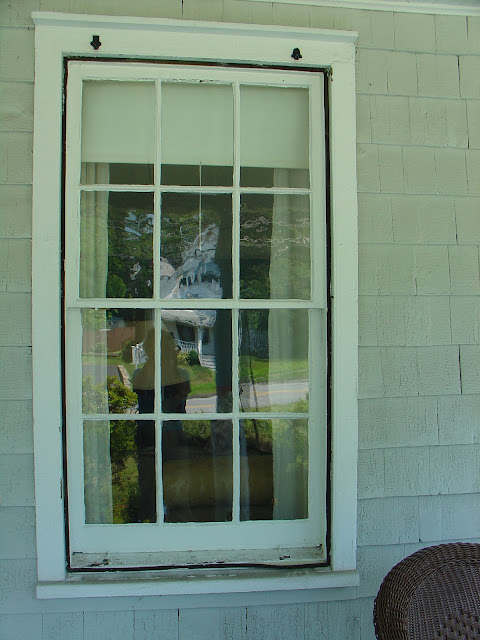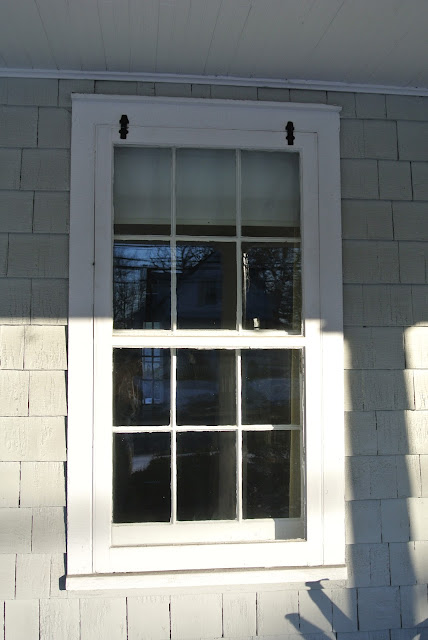On blogs elsewhere on the web, there are a few other designs, mainly for screen doors. Since every house is different, and since I couldn't locate any photos of actual original wooden window screens on the web or in books when I was trying to figure out whether I could make my own, I have photographed three other screens that I found in the basement.
They don't fit any of my windows (so then, why are they squirreled away in my basement? Who knows?), but of course I kept them, like some other pack rat before me, and they might be helpful to others.
For each of these, I subsequently went back and did posts with close-up detail for each, with links below.
Alternate Model Number One:
Here is one that is made without mitered corners. Stuck onto what I think is the back, on the top, is a very different kind of bug stop, a header of beadboard. Perhaps used to hang the screen? Or to slip up underneath a half-storm? Maybe as a part of a two-part screen for a double-hung window? I don't know.
Now we're looking at what I think is the front of the screen above. The screening is held in place with strips of what looks like shoe-molding. I have seen instructions for making a screen door elsewhere on the web, and the screening was held in place in this manner, so this is another option, different from our original model. There is no need to rabbet out the frame with this design.
For more detail on this model, click here.
Alternate Model Number Two:
Here is another, similar screen that uses the same type of shoe-molding trim to hold the screening in place, but this time, nailed to the front of the frame:
Here is a back view of Number Two. The corners of the frame are not mitered. I don't know how they're held in place, because there are no angle-fasteners. Let me go downstairs and investigate again. But before I do that, I will point out that this model, like my original, has a projection from the back that presumably fills in that gap between the blind stop and the meeting rails (as described in my last post on window screens).
And bingo! This frame is held together with tiny little dowel rods. Two on one end of each corner. That was the construction we settled on for ours (obviously not by investigating our own alternate models!). So, when I come to the post on constructing replacements, I'll take a close-up of this construction.
For more detail on this model, click here.
Alternate Model Number Three:
This is a beautifully made, square screen. It is very similar to my original model except the corners of the frame are not mitered. And, the trim that holds the screening in place is a prettier, patterned bit of trim.
The back of Number Three shows the now familiar projection, this time made of shoe-molding turned upside down, that looks added, as an afterthought, unpainted. And the corners of the frame are fastened with an angle fastener, like Number One.
For more details on this model, click here.
And that's it. Three alternate designs for wooden window screens. Have at it guys and gals!
____________________________________________
For
the entire series on making wooden window screens, click on the category
"How to Make Wood Window Screens Series", in the Topics list along
the right-hand side of the home page. There is also now an index tab at the top
of the home page, listing all the posts in sequential order, with a link to
each one.






























